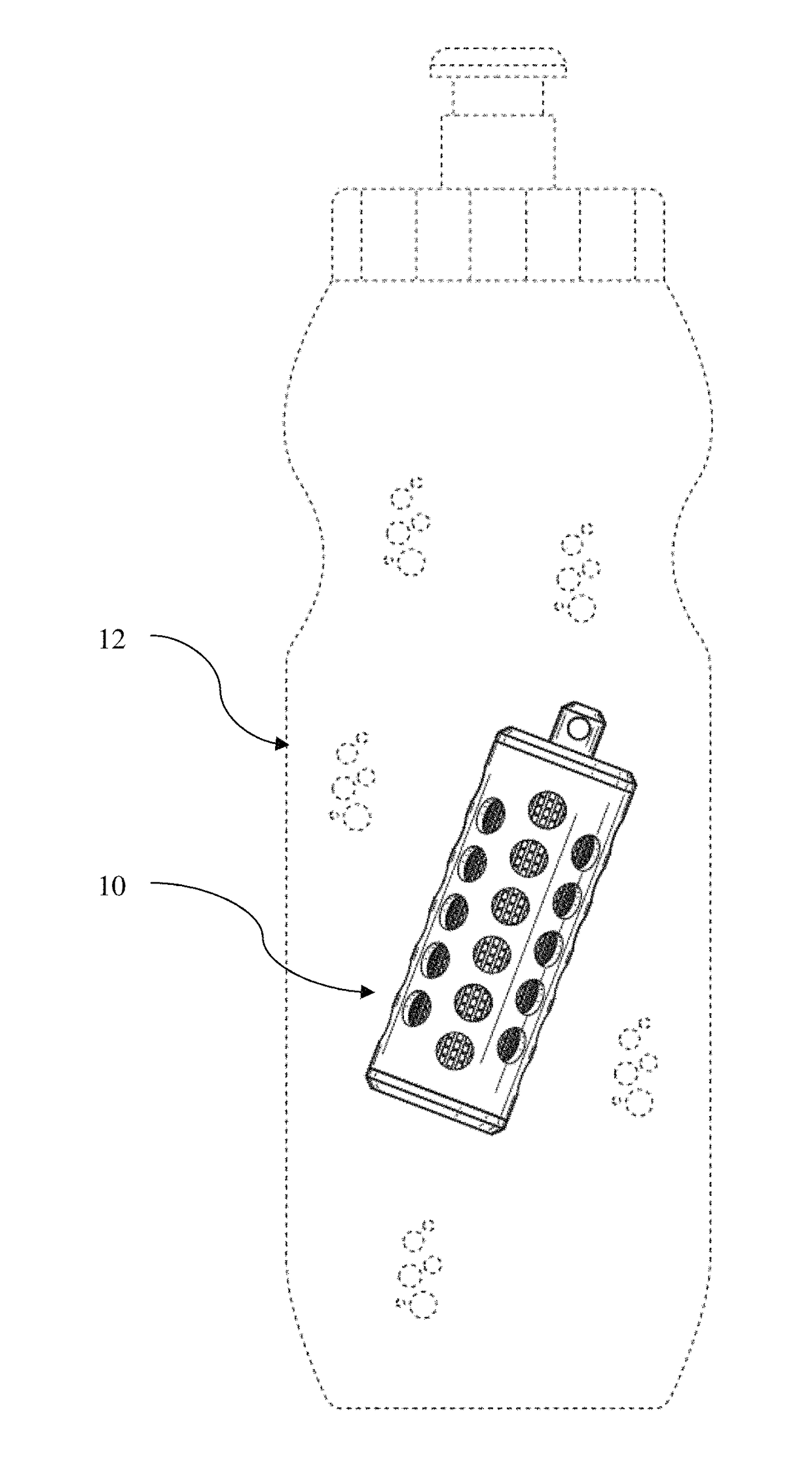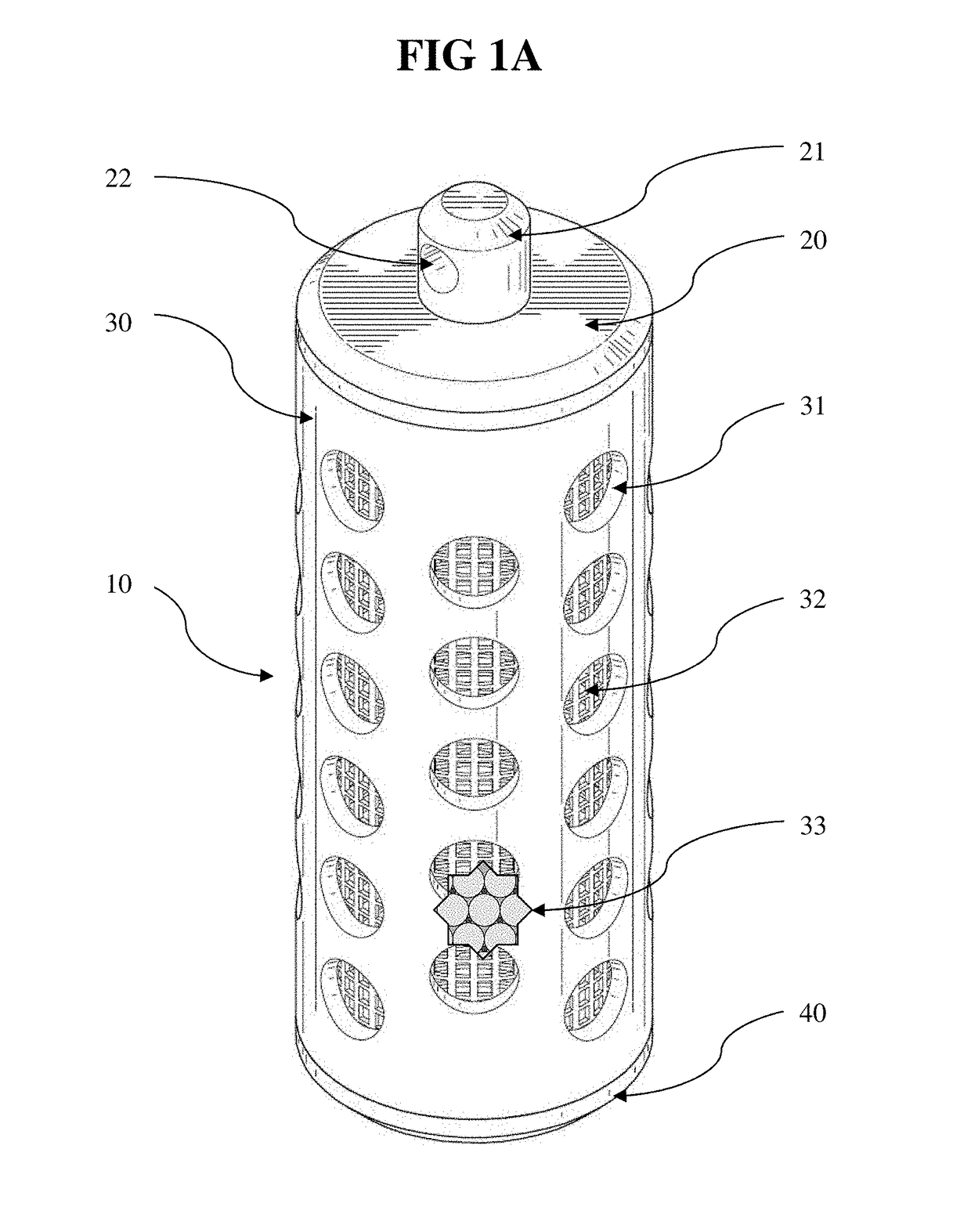Portable pathogen deactivation method and apparatus
a technology of pathogen deactivation and portable devices, applied in chemical apparatus and processes, specific water treatment objectives, filtration, etc., can solve the problems of clogging of types of filters, affecting the effect of disinfection, and requiring frequent replacement, so as to achieve small and simple use, the effect of low cos
- Summary
- Abstract
- Description
- Claims
- Application Information
AI Technical Summary
Benefits of technology
Problems solved by technology
Method used
Image
Examples
Embodiment Construction
[0087]A detailed description of example embodiments is as follows:
[0088]This disclosure relates to methods and apparatuses for rapid and low cost deactivation of harmful microorganisms in contaminated water in conditions under primitive or compromised conditions. Examples of primitive or compromised conditions include emergency relief situations, such as after a flood or earthquake or similar natural disaster, or situations where people are in transit due to military actions, or situations where people are in refugee camps. An official classification of people in conditions like those described above is ‘Displaced Persons’, and the World Health Organization (www.who.org) estimates there are currently over 40 million people in this category.
[0089]The portable pathogen deactivation device contains a microporous medium that is treated with colloidal silver. The colloidal silver is absorbed into the media, and used in concentrations sufficient to deactivate bacteria and other pathogens ...
PUM
| Property | Measurement | Unit |
|---|---|---|
| density | aaaaa | aaaaa |
| pore size | aaaaa | aaaaa |
| diameter | aaaaa | aaaaa |
Abstract
Description
Claims
Application Information
 Login to View More
Login to View More - R&D
- Intellectual Property
- Life Sciences
- Materials
- Tech Scout
- Unparalleled Data Quality
- Higher Quality Content
- 60% Fewer Hallucinations
Browse by: Latest US Patents, China's latest patents, Technical Efficacy Thesaurus, Application Domain, Technology Topic, Popular Technical Reports.
© 2025 PatSnap. All rights reserved.Legal|Privacy policy|Modern Slavery Act Transparency Statement|Sitemap|About US| Contact US: help@patsnap.com



